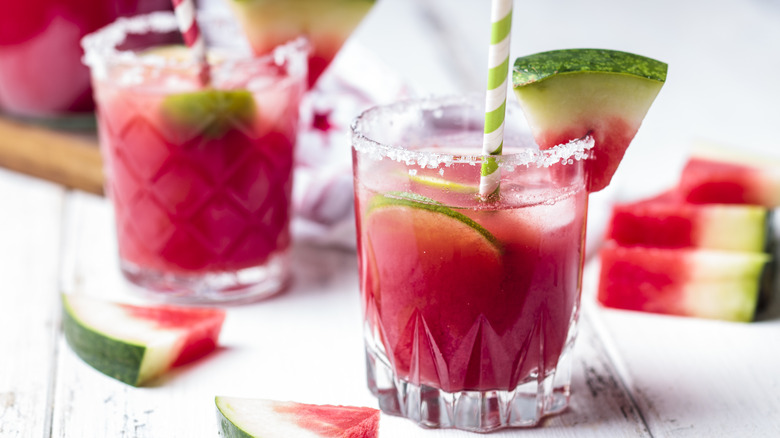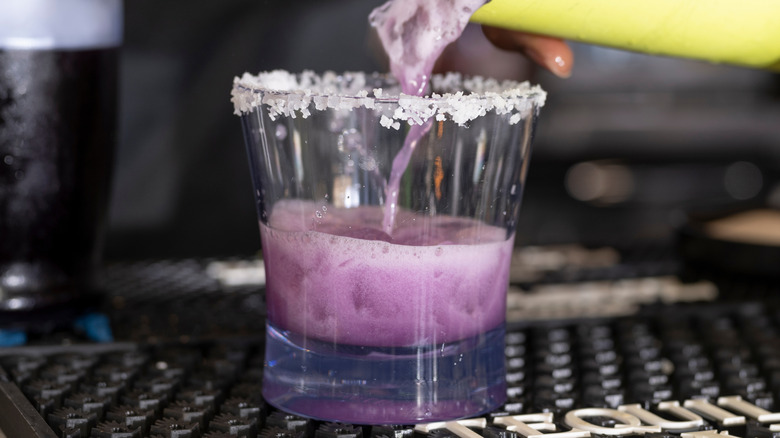How To Experiment With A Margarita's Fruity Flavors Without Ruining Its Profile
A classic margarita recipe — with tequila, triple sec, and lime — is tried and true, but the cocktail also has room for experimentation. To learn how to play around with a margarita's fruity flavors without ruining its unique flavor profile, we decided to consult with an expert. Molly Horn is the chief mixologist and spirits educator at Total Wine & More, America's largest retailer of fine wine with over 270 stores across the country (and a selection of thousands of spirits).
We asked Horn if she had any recommendations for fruit juices to add to margaritas, beyond the more common ones like lime and strawberry. Horn told us, "Adding fruit in the form of a juice to your margarita recipe is a great way to experiment, but it can be hard to know how to balance the cocktail." You can, and should, experiment with whatever fruits you love, and check out our recipes for fun, one-of-a-kind margaritas for inspiration. (Some examples include a version that contains thyme, passionfruit and marigold flowers, and a sweet-and-spicy take based on the mangonada.) However, no matter what you choose, always keep the balance of sweet and sour in mind. "The key is to think about the acidity of the juice you are using," the mixologist said. A margarita that is too sweet or too sour is never ideal, so Horn has tips on how to keep the cocktail well-rounded.
Fruit syrups are even better than fruit juice
According to Molly Horn, you can make most all fruit juices work in a margarita if you know how to balance the acidity of the drink. "For example, if using mango, which is a little sweeter and less acidic, you may want to add a little more lime juice, whereas if you are using passionfruit juice, you will probably need to add more agave nectar," she explained. Likewise, juice from sweet fruits like watermelon and grapes might require additional acidity. Grapefruit, cranberry, or cherry juice, on the other hand, are naturally sour and could use an extra boost of agave nectar to balance the drink. Horn likened the flavor-enhancing powers of sugar in drinks to salt in cooking. Sugar ensures the fruit flavor pops in the margarita.
If you're worried you might have to use too much juice to achieve the flavor you want, Horn has another useful tip. She prefers fruit syrups to juice, "a good one of which will pack all the flavor of a fresh fruit plus sugar that will make that flavor pop." There are syrups for just about every fruit out there, and their concentrated flavor means it won't take much to impact the taste. "[Fruit syrup] also makes cocktail math far simpler — just substitute fruit syrup for your agave nectar and keep all your other ratios the same, and you'll end up with a perfectly balanced, delicious, fruity margarita!" Once you've nailed the basics of incorporating fruity flavors, consider adding one more element through some diced jalapeño in a refreshing spicy margarita recipe.

